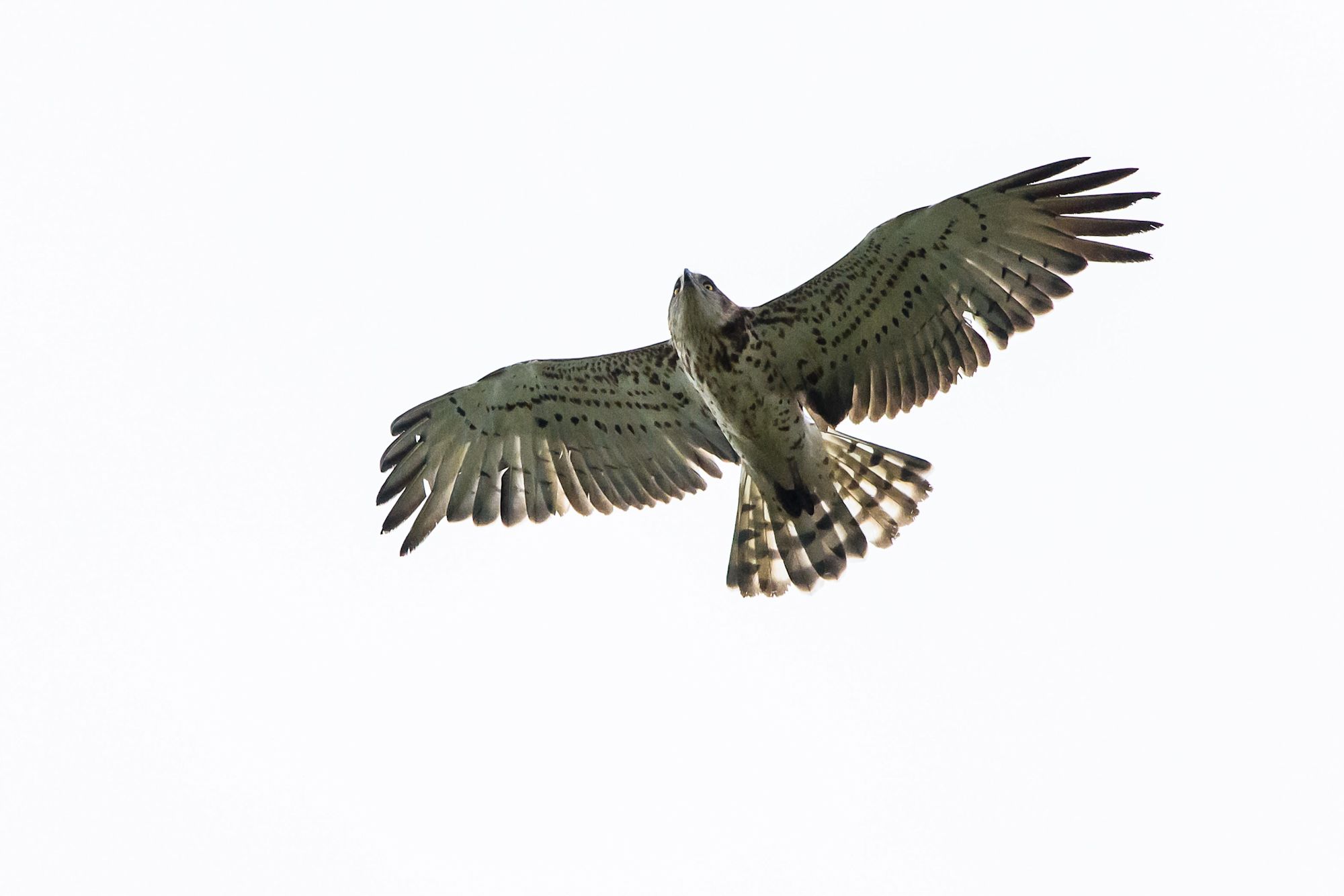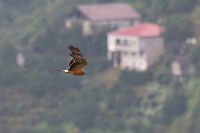Imagine sitting on a hilltop with multiple thousands of raptors in the sky: some are circling in a ball while thousands of other birds stream past on every side. Imagine trying to count that, and do it as accurately as possible while identifying and ageing each individual bird, and not double-counting birds. Sounds practically impossible, doesn’t it?
The Batumi Raptor Count (BRC) has been doing exactly that since 2008, implementing standardized protocols and complete fall counts in 2011. The counts involve two teams of volunteer observers and four full-time coordinators, based at two counting stations. The first station is on a hilltop about 2.4 kilometers (1.5mi) from the coast, with the second station being about 4 kilometers (2.5mi) further inland in the buffer zone to the Mtirala National Park. Armed with counting clickers, observers are assigned to specific groups of birds, species and zones, allowing them to count every single individual as they cross the transact line. These counts are then relayed as soon as possible to a tablet computer as other observers take on the task of cataloging new groups of birds.


Batumi Raptor Count
Accounting for differential migration strategies between age groups to monitor raptor population dynamics in the eastern Black Sea flyway
VANSTEELANT ET AL. IN PRESS
At the end of each day, a consolidation script analyzes each individual observation recorded by the two counting stations to attempt to rule out double counting. While counting, the observers would have coordinated the counting by walkie-talkie and used landscape cues to only count birds crossing the transect line up until the half way points between the two stations, but because this can never be 100% accurate, the script tries to remove overlapping records with the same time stamp, species and similar numbers.

“Our absolute priority and attention is given to the primary focus species,”
Folkert de Boer, a member of the BRC monitoring working group“of course it’s always fun to find rare species, but we can’t let it distract us from why we are really here. Ensuring that the data for our most important species are as accurate as possible, we’re best able to understand and interpret long term population trends.”
Initial analysis suggests that, while the counts for most species seem to be stable, the number of juvenile Montagu’s Harriers (Circus pygargus) and Booted Eagles (Hieraaetus pennatus) being recorded is decreasing [1]. This could be a forewarning of developing problems in the breeding ranges of these species. By contrast, one sign for optimism is that the numbers of Black Kites (Milvus migrans) and Short-toed Eagles (Circaetus gallicus) being recorded seems to be on the rise.

If you are interested in learning more about
the Batumi Raptor Count,
or even joining or supporting them, check out their website: www.batumiraptorcount.org
Find out more about the BRC counting protocol.














